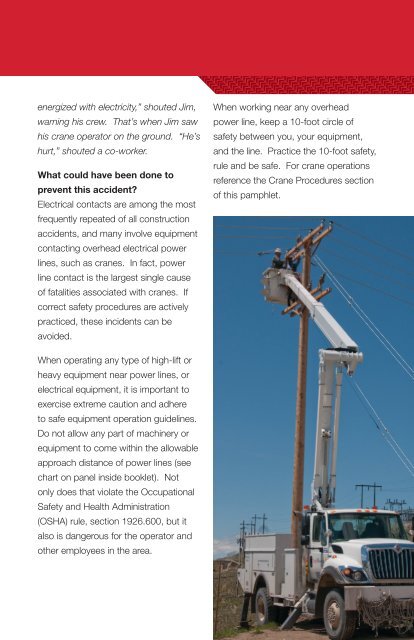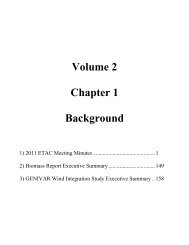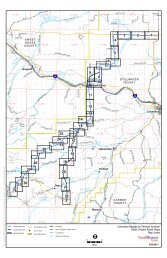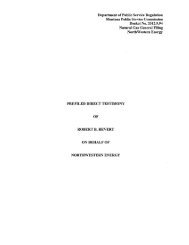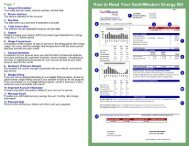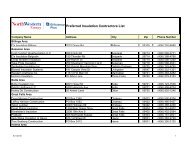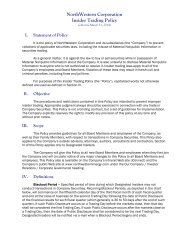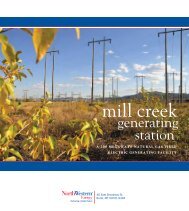Safety for Contractors
Here - NorthWestern Energy
Here - NorthWestern Energy
- No tags were found...
You also want an ePaper? Increase the reach of your titles
YUMPU automatically turns print PDFs into web optimized ePapers that Google loves.
energized with electricity,” shouted Jim,<br />
warning his crew. That’s when Jim saw<br />
his crane operator on the ground. “He’s<br />
hurt,” shouted a co-worker.<br />
What could have been done to<br />
prevent this accident?<br />
Electrical contacts are among the most<br />
frequently repeated of all construction<br />
accidents, and many involve equipment<br />
contacting overhead electrical power<br />
lines, such as cranes. In fact, power<br />
line contact is the largest single cause<br />
of fatalities associated with cranes. If<br />
correct safety procedures are actively<br />
practiced, these incidents can be<br />
avoided.<br />
When working near any overhead<br />
power line, keep a 10-foot circle of<br />
safety between you, your equipment,<br />
and the line. Practice the 10-foot safety,<br />
rule and be safe. For crane operations<br />
reference the Crane Procedures section<br />
of this pamphlet.<br />
When operating any type of high-lift or<br />
heavy equipment near power lines, or<br />
electrical equipment, it is important to<br />
exercise extreme caution and adhere<br />
to safe equipment operation guidelines.<br />
Do not allow any part of machinery or<br />
equipment to come within the allowable<br />
approach distance of power lines (see<br />
chart on panel inside booklet). Not<br />
only does that violate the Occupational<br />
<strong>Safety</strong> and Health Administration<br />
(OSHA) rule, section 1926.600, but it<br />
also is dangerous <strong>for</strong> the operator and<br />
other employees in the area.<br />
3


